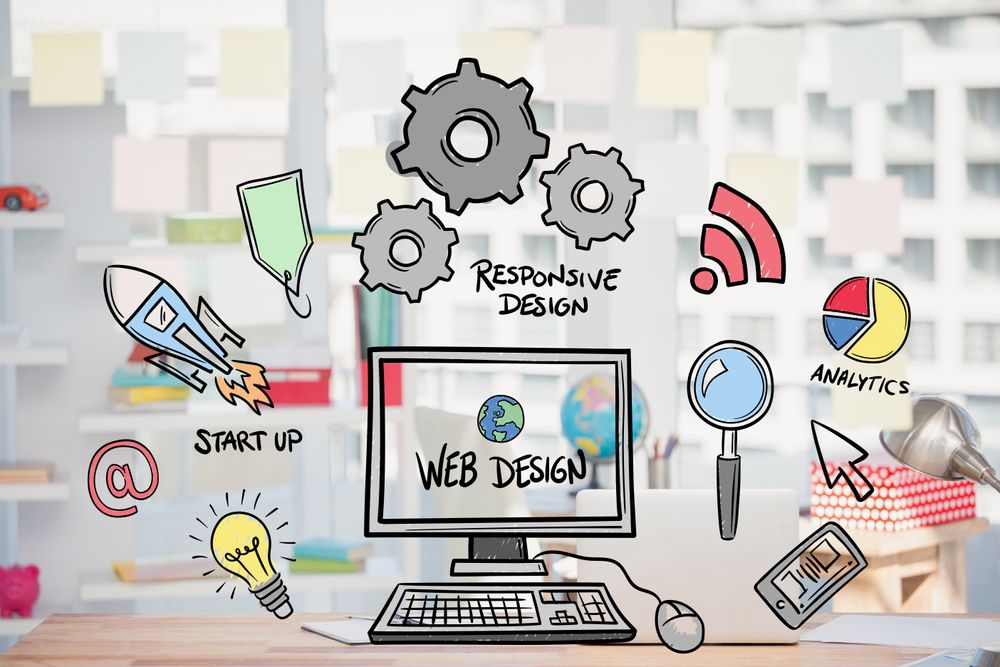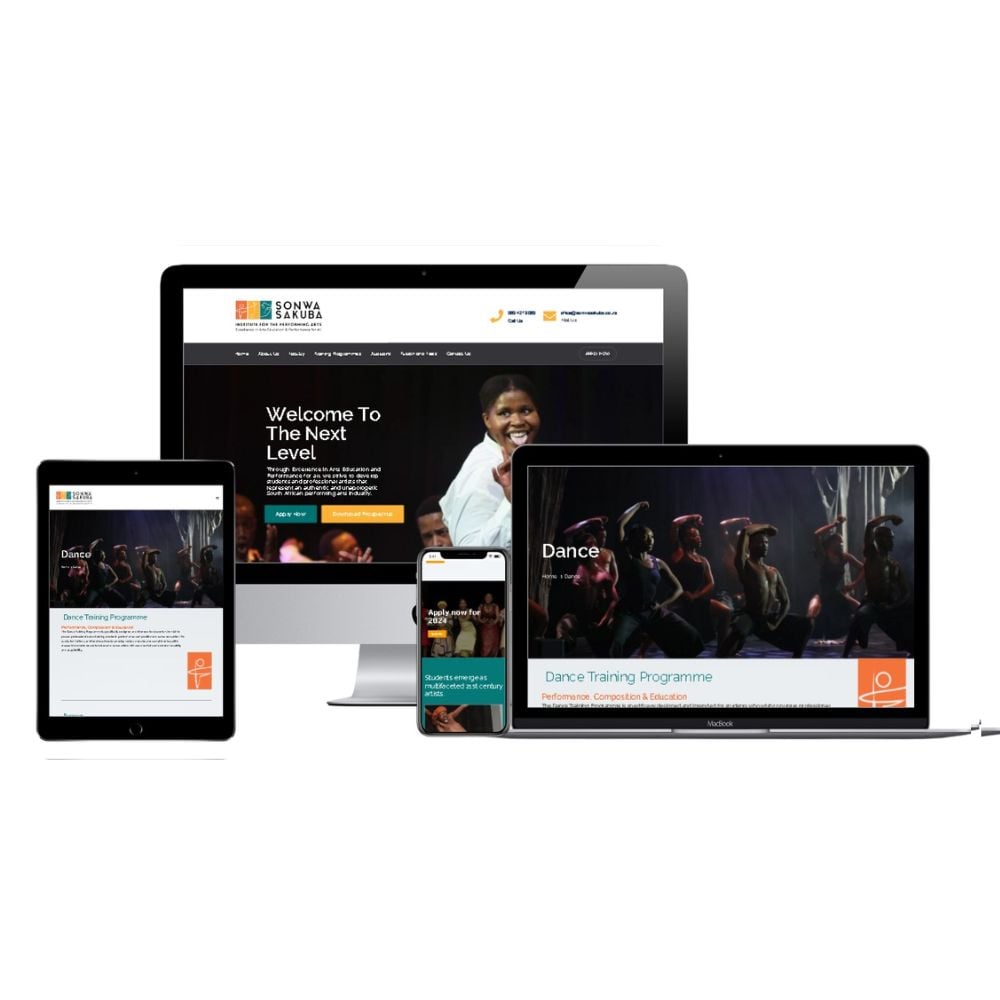The Importance of Mobile-Friendly Website Design
The Importance of Mobile-Friendly Website Design
Blog Article
The Ultimate Guide to Modern Website Design Trends
In the ever-evolving electronic landscape, modern-day website layout trends play a crucial role in forming customer experience and involvement. From the rise of minimal layout concepts that focus on simplicity to the impact of vibrant typography in specifying brand identity, each component adds to a natural on the internet visibility. The emphasis on receptive and mobile-first methods, along with cutting-edge microinteractions, even more improves use. The growing emphasis on lasting web design practices mirrors a commitment to ecological responsibility. These fads jointly elevate crucial questions regarding the future of efficient website design and what it means for businesses and customers alike.
Minimalist Design Principles
Minimalist layout concepts stress the concept that less is a lot more, advocating for simplicity and functionality in visual interaction. This technique remove unneeded aspects, focusing instead on essential components that share the designated message effectively. By focusing on clarity, minimalist style improves customer experience, enabling site visitors to browse web sites effortlessly.
Core tenets of minimalist design include the use of enough white area, which produces a feeling of balance and organization. This negative space not just routes the visitor's focus to crucial components but additionally promotes a soothing visual atmosphere. Furthermore, a limited color palette is frequently utilized, making use of single schemes or soft hues to keep visual communication and avoid frustrating the user.
Typography plays a vital role in minimalist layout, where readable fonts are picked for their simplicity and efficiency in connecting material. Graphics and photos are utilized moderately, making certain that they serve a purpose as opposed to sidetrack from the total message. Inevitably, minimal style principles cultivate a concentrated atmosphere that motivates individuals to engage with the material, boosting the total performance of modern site design. This fad shows an expanding appreciation for thoughtful, user-centric aesthetic appeals in digital spaces.
Bold Typography Selections
Accepting strong typography choices has actually ended up being a specifying quality of contemporary website layout, as it successfully captures interest and communicates solid messaging. Designers are increasingly using typography not simply as a practical element however as a key aesthetic component that enhances the general visual and user experience.

In addition, the juxtaposition of bold typography with minimal layout concepts enables for striking contrasts, enhancing readability while preserving visual appeal. Making use of whitespace around bold message even more stresses its significance, making sure that the message resonates with the audience.
As electronic landscapes end up being more competitive, leveraging strong typography allows brand names to distinguish themselves and leave a long-term perception. The careful choice of typefaces and their application can evoke emotions, establish tone, and drive activity, making vibrant typography a vital device in modern site layout. Inevitably, it is an effective method to enhance narration and ensure that crucial messages are not only seen but additionally felt.
Responsive and Mobile-first Layout
Receptive and mobile-first style has emerged as an essential concept in modern website growth, reflecting the enhancing reliance on mobile phones for accessing on the internet material. As customer habits changes towards mobile browsing, developers should focus on creating experiences that adjust flawlessly across various screen sizes and resolutions.
A receptive layout guarantees that a web site instantly adjusts its format, photos, and functionality based on the tool being used. This strategy improves individual experience by giving constant navigation and readability, regardless of whether the site visitor is on a tablet, mobile phone, or desktop computer computer system. Furthermore, mobile-first design advocates for creating web sites at first for smaller sized screens, consequently scaling as much as larger displays. This approach encourages a much more effective and streamlined layout procedure, concentrating on essential web content and capability initially.
Implementing mobile-first and receptive principles not just deals with individual choices but likewise straightens with search engine optimization (SEO) practices. Significant internet search engine, like Google, prioritize mobile-friendly web sites in their rankings, making it vital for businesses to embrace these design techniques. In a competitive digital landscape, accepting receptive and mobile-first style is not just a choice; it is important for making certain availability and engagement with a varied target market.
Involving Microinteractions
Microinteractions play a pivotal duty in improving user involvement and general internet site experience, specifically in the context of receptive and mobile-first design. These subtle style elements offer immediate responses to individuals, making interactions extra user-friendly and delightful. Examples include button computer animations, notification alerts, and filling indications, which not just guide individuals yet likewise create a feeling of connection with the interface.
Incorporating engaging microinteractions can significantly enhance functionality by lowering cognitive tons. When individuals obtain aesthetic or auditory responses upon doing actions, such as clicking a button or submitting a form, they feel extra certain in their selections. This promotes a smoother navigation experience, eventually enhancing customer retention.

As web site style trends remain to advance, the value of microinteractions can not be overstated. They offer as the refined yet effective touchpoints that transform average interactions right into amazing experiences, thus boosting the overall efficiency of contemporary website design.
Lasting Website Design Practices
Sustainable internet style methods are coming to be significantly important as the electronic landscape expands and environmental problems rise. Designers and programmers are identifying their obligation to create websites that not only serve customer demands yet also reduce environmental influence. This method encompasses numerous crucial methods.
First of all, optimizing power intake is paramount. Internet sites need to be designed to fill promptly and efficiently, which decreases web server energy use and boosts individual experience. Methods such as picture compression, decreasing HTTP requests, and making use of modern coding methods contribute significantly to this goal.
Second of all, selecting environment-friendly holding providers is essential - website design. Numerous holding companies are currently powered by renewable resource resources, making it possible for sites to run in an extra sustainable way. This selection mirrors a commitment to decreasing carbon footprints
In addition, embracing a minimal layout can boost sustainability. Less aspects on a web page lead to next less data transfer, which not just quickens loading times but also preserves resources.
Lastly, promoting electronic accessibility ensures that internet sites get to a broader target market without unnecessary bloat, lining up user experience with environmental duty. By integrating these lasting techniques, web designers can add favorably to both user engagement and the planet's well-being.
Conclusion
In recap, modern website style fads highlight the combination of minimal principles, bold typography, and receptive style to enhance user experience. Engaging microinteractions add to remarkable communications, while lasting practices promote for eco conscious development. Collectively, these components not just elevate visual appeal however also improve performance, making certain that sites are both straightforward and visually striking. Adopting these trends is crucial for developing impactful digital experiences that resonate with users in a significantly affordable on the internet landscape.
In the ever-evolving digital landscape, contemporary internet site style trends play a vital role in shaping individual experience and interaction. By prioritizing quality, minimalist style enhances user experience, allowing visitors to browse sites effortlessly.
Eventually, minimalist layout concepts grow moved here a focused environment that encourages customers to involve with the material, improving the total effectiveness of modern internet site design.Microinteractions play a critical function in improving customer interaction and general web site experience, specifically in the context of responsive and mobile-first style.In recap, modern website style fads stress the integration of minimal concepts, vibrant typography, and responsive style to boost customer experience.
Report this page